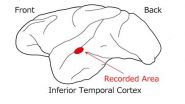(Press-News.org) Although the heart beats out a very familiar "lub-dub" pattern that speeds up or slows down as our activity increases or decreases, the pattern itself isn't as regular as you might think. In fact, the amount of time between heartbeats can vary even at a "constant" heart rate—and that variability, doctors have found, is a good thing.
Reduced heart rate variability (HRV) has been found to be predictive of a number of illnesses, such as congestive heart failure and inflammation. For athletes, a drop in HRV has also been linked to fatigue and overtraining. However, the underlying physiological mechanisms that control HRV—and exactly why this variation is important for good health—are still a bit of a mystery.
By combining heart rate data from real athletes with a branch of mathematics called control theory, a collaborative team of physicians and Caltech researchers from the Division of Engineering and Applied Sciences have now devised a way to better understand the relationship between HRV and health—a step that could soon inform better monitoring technologies for athletes and medical professionals.
The work was published in the August 19 print issue of the Proceedings of the National Academy of Sciences.
To run smoothly, complex systems, such as computer networks, cars, and even the human body, rely upon give-and-take connections and relationships among a large number of variables; if one variable must remain stable to maintain a healthy system, another variable must be able to flex to maintain that stability. Because it would be too difficult to map each individual variable, the mathematics and software tools used in control theory allow engineers to summarize the ups and downs in a system and pinpoint the source of a possible problem.
Researchers who study control theory are increasingly discovering that these concepts can also be extremely useful in studies of the human body. In order for a body to work optimally, it must operate in an environment of stability called homeostasis. When the body experiences stress—for example, from exercise or extreme temperatures—it can maintain a stable blood pressure and constant body temperature in part by dialing the heart rate up or down. And HRV plays an important role in maintaining this balance, says study author John Doyle, the Jean-Lou Chameau Professor of Control and Dynamical Systems, Electrical Engineering, and Bioengineering.
"A familiar related problem is in driving," Doyle says. "To get to a destination despite varying weather and traffic conditions, any driver—even a robotic one—will change factors such as acceleration, braking, steering, and wipers. If these factors suddenly became frozen and unchangeable while the car was still moving, it would be a nearly certain predictor that a crash was imminent. Similarly, loss of heart rate variability predicts some kind of malfunction or 'crash,' often before there are any other indications," he says.
To study how HRV helps maintain this version of "cruise control" in the human body, Doyle and his colleagues measured the heart rate, respiration rate, oxygen consumption, and carbon dioxide generation of five healthy young athletes as they completed experimental exercise routines on stationary bicycles.
By combining the data from these experiments with standard models of the physiological control mechanisms in the human body, the researchers were able to determine the essential tradeoffs that are necessary for athletes to produce enough power to maintain an exercise workload while also maintaining the internal homeostasis of their vital signs.
"For example, the heart, lungs, and circulation must deliver sufficient oxygenated blood to the muscles and other organs while not raising blood pressure so much as to damage the brain," Doyle says. "This is done in concert with control of blood vessel dilation in the muscles and brain, and control of breathing. As the physical demands of the exercise change, the muscles must produce fluctuating power outputs, and the heart, blood vessels, and lungs must then respond to keep blood pressure and oxygenation within narrow ranges."
Once these trade-offs were defined, the researchers then used control theory to analyze the exercise data and found that a healthy heart must maintain certain patterns of variability during exercise to keep this complicated system in balance. Loss of this variability is a precursor of fatigue, the stress induced by exercise. Today, some HRV monitors in the clinic can let a doctor know when variability is high or low, but they provide little in the way of an actionable diagnosis.
Because monitors in hospitals can already provide HRV levels and dozens of other signals and readings, the integration of such mathematical analyses of control theory into HRV monitors could, in the future, provide a way to link a drop in HRV to a more specific and treatable diagnosis. In fact, one of Doyle's students has used an HRV application of control theory to better interpret traditional EKG signals.
Control theory could also be incorporated into the HRV monitors used by athletes to prevent fatigue and injury from overtraining, he says.
"Physicians who work in very data-intensive settings like the operating room or ICU are in urgent need of ways to rapidly and acutely interpret the data deluge," says Marie Csete, MD (PhD, '00), chief scientific officer at the Huntington Medical Research Institutes and a coauthor on the paper. "We hope this work is a first step in a larger research program that helps physicians make better use of data to care for patients."
This study is not the first to apply control theory in medicine. Control theory has already informed the design of a wearable artificial pancreas for type 1 diabetic patients and an automated prototype device that controls the administration of anesthetics during surgery. Nor will it be the last, says Doyle, whose sights are next set on using control theory to understand the progression of cancer.
"We have a new approach, similarly based on control of networks, that organizes and integrates a bunch of new ideas floating around about the role of healthy stroma—non-tumor cells present in tumors—in promoting cancer progression," he says.
"Based on discussions with Dr. Peter Lee at City of Hope [a cancer research and treatment center], we now understand that the non-tumor cells interact with the immune system and with chemotherapeutic drugs to modulate disease progression," Doyle says. "And I'm hoping there's a similar story there, where thinking rigorously about the tradeoffs in development, regeneration, inflammation, wound healing, and cancer will lead to new insights and ultimately new therapies."
INFORMATION:
Other Caltech coauthors on the study include former graduate students Na Li (PhD '13) now an assistant professor at Harvard; Somayeh Sojoudi (PhD '12), currently at NYU; and graduate students Chenghao Simon Chien and Jerry Cruz. Other collaborators on the study were Benjamin Recht, a former postdoctoral scholar in Doyle's lab and now an assistant professor at UC Berkeley; Daniel Bahmiller, a clinician training in public health; and David Stone, MD, an expert in ICU medicine from the University of Virginia School of Medicine.
Variability keeps the body in balance
Using mathematical theory and software tools, Caltech researcher John Doyle studies why a variable heart rate is a sign of health and fitness
2014-09-22
ELSE PRESS RELEASES FROM THIS DATE:
NASA sees Tropical Depression Polo winding down
2014-09-22
Infrared satellite imagery from NASA's Aqua satellite showed only a swirl of low-level clouds some deep clouds around Polo's weakening center on Sept. 22 as the storm weakened to a depression.
The Atmospheric Infrared Sounder or AIRS instrument aboard Aqua gathered infrared data on Polo on Sept. 22 at 5:11 a.m. EDT, reading cloud top temperatures. There was a small area of high clouds, indicating that most thunderstorms in the depression had weakened or already dissipated except for that area.
At 5 a.m. EDT on Monday, Sept. 22, Tropical Depression Polo's maximum sustained ...
Compound from hops aids cognitive function in young animals
2014-09-22
CORVALLIS, Ore. – Xanthohumol, a type of flavonoid found in hops and beer, has been shown in a new study to improve cognitive function in young mice, but not in older animals.
The research was just published in Behavioral Brain Research by scientists from the Linus Pauling Institute and College of Veterinary Medicine at Oregon State University. It's another step toward understanding, and ultimately reducing the degradation of memory that happens with age in many mammalian species, including humans.
Flavonoids are compounds found in plants that often give them their ...
Engineers show light can play seesaw at the nanoscale
2014-09-22
University of Minnesota electrical engineering researchers have developed a unique nanoscale device that for the first time demonstrates mechanical transportation of light. The discovery could have major implications for creating faster and more efficient optical devices for computation and communication.
The research paper by University of Minnesota electrical and computer engineering assistant professor Mo Li and his graduate student Huan Li has been published online and will appear in the October issue of Nature Nanotechnology.
Researchers developed a novel nanoscale ...
Graphene imperfections key to creating hypersensitive 'electronic nose'
2014-09-22
Researchers have discovered a way to create a highly sensitive chemical sensor based on the crystalline flaws in graphene sheets. The imperfections have unique electronic properties that the researchers were able to exploit to increase sensitivity to absorbed gas molecules by 300 times.
The study is available online in advance of print in Nature Communications.
Amin Salehi- Khojin, asst professor of mechanical and industrial engineering in the lab with Mohammad Asadi, graduate student and Bijandra Kumar, post doc where they are doing research in graphene sensors. Photo: ...
Gravitational waves according to Planck
2014-09-22
No one has ever directly observed gravitational waves, phenomena predicted by Einstein's theory of General Relativity, and such a discovery would have profound implications for the study of the Universe. Last March, however, the team behind the BICEP2 project made a ground-breaking announcement: the Antarctic observatory had detected a signal referable to gravitational waves. The study claimed to have excluded possible contaminants (other sources that could have generated the same signal) and that the observation was therefore to be considered genuine. But not everyone ...
Miranda: An icy moon deformed by convection
2014-09-22
Boulder, Colo., USA – Miranda, a small, icy moon of Uranus, is one of the most visually striking and enigmatic bodies in the solar system. Despite its relatively small size, Miranda appears to have experienced an episode of intense resurfacing that resulted in the formation of at least three remarkable and unique surface features -- polygonal-shaped regions called coronae.
These coronae are visible in Miranda's southern hemisphere, and each one is at least 200 km across. Arden corona, the largest, has ridges and troughs with up to 2 km of relief. Elsinore corona has ...
Neurons express 'gloss' using 3 perceptual parameters
2014-09-22
Japanese researchers showed monkeys a number of images representing various glosses and then they measured the responses of 39 neurons by using microelectrodes. They found that a specific population of neurons changed the intensities of the responses linearly according to either the contrast-of-highlight, sharpness-of-highlight, or brightness of the object. This shows that these 3 perceptual parameters are used as parameters when the brain recognizes a variety of glosses. They also found that different parameters are represented by different populations of neurons. This ...
A two-generation lens: Current state policies fail to support families with young children
2014-09-22
September 19, 2014 -- Recent two-generation approaches to reducing poverty that help children and their parents are receiving increasing attention from researchers, advocates, and foundations. By combining education and training for parents to enable them to move to jobs that offer a path out of poverty with high-quality early care and education for children, these programs aim to improve the life opportunities of both. However, according to a new report from the National Center for Children in Poverty (NCCP), State Policies through a Two-Generation Lens, while research ...
Good bowel cleansing is key for high-quality colonoscopy
2014-09-22
Bethesda, MD (Sept. 22, 2014) — The success of a colonoscopy is closely linked to good bowel preparation, with poor bowel prep often resulting in missed precancerous lesions, according to new consensus guidelines released by the U.S. Multi-Society Task force on Colorectal Cancer. Additionally, poor bowel cleansing can result in increased costs related to early repeat procedures. Up to 20 to 25 percent of all colonoscopies are reported to have an inadequate bowel preparation.
"When prescribing bowel preparation for their patients, health-care professionals need to be ...
Online ratings influence parents' choices of physicians for their children
2014-09-22
ANN ARBOR, Mich. – Almost three-quarters (74%) of parents are aware of online rating sites for physicians, and more than one-quarter (28%) have used those online ratings to choose a healthcare provider for their children, according to U-M research published today in Pediatrics.
Using the University of Michigan's C.S. Mott Children's Hospital National Poll on Children's Health, researchers surveyed 1,619 parents about how online ratings of physicians influenced their choices in seeking healthcare providers for their children.
They found that parents had a higher level ...
LAST 30 PRESS RELEASES:
Interaction of climate change and human activity and its impact on plant diversity in Qinghai-Tibet plateau
From addressing uncertainty to national strategy: an interpretation of Professor Lim Siong Guan’s views
Clinical trials on AI language model use in digestive healthcare
Scientists improve robotic visual–inertial trajectory localization accuracy using cross-modal interaction and selection techniques
Correlation between cancer cachexia and immune-related adverse events in HCC
Human adipose tissue: a new source for functional organoids
Metro lines double as freight highways during off-peak hours, Beijing study shows
Biomedical functions and applications of nanomaterials in tumor diagnosis and treatment: perspectives from ophthalmic oncology
3D imaging unveils how passivation improves perovskite solar cell performance
Enriching framework Al sites in 8-membered rings of Cu-SSZ-39 zeolite to enhance low-temperature ammonia selective catalytic reduction performance
AI-powered RNA drug development: a new frontier in therapeutics
Decoupling the HOR enhancement on PtRu: Dynamically matching interfacial water to reaction coordinates
Sulfur isn’t poisonous when it synergistically acts with phosphine in olefins hydroformylation
URI researchers uncover molecular mechanisms behind speciation in corals
Chitin based carbon aerogel offers a cleaner way to store thermal energy
Tracing hidden sources of nitrate pollution in rapidly changing rural urban landscapes
Viruses on plastic pollution may quietly accelerate the spread of antibiotic resistance
Three UH Rainbow Babies & Children’s faculty elected to prestigious American Pediatric Society
Tunnel resilience models unveiled to aid post-earthquake recovery
Satellite communication systems: the future of 5G/6G connectivity
Space computing power networks: a new frontier for satellite technologies
Experiments advance potential of protein that makes hydrogen sulfide as a therapeutic target for Alzheimer’s disease
Examining private equity’s role in fertility care
Current Molecular Pharmacology achieves a landmark: real-time CiteScore advances to 7.2
Skeletal muscle epigenetic clocks developed using postmortem tissue from an Asian population
Estimating unemployment rates with social media data
Climate policies can backfire by eroding “green” values, study finds
Too much screen time too soon? A*STAR study links infant screen exposure to brain changes and teen anxiety
Global psychiatry mourns Professor Dan Stein, visionary who transformed mental health science across Africa and beyond
KIST develops eco-friendly palladium recovery technology to safeguard resource security
[Press-News.org] Variability keeps the body in balanceUsing mathematical theory and software tools, Caltech researcher John Doyle studies why a variable heart rate is a sign of health and fitness




